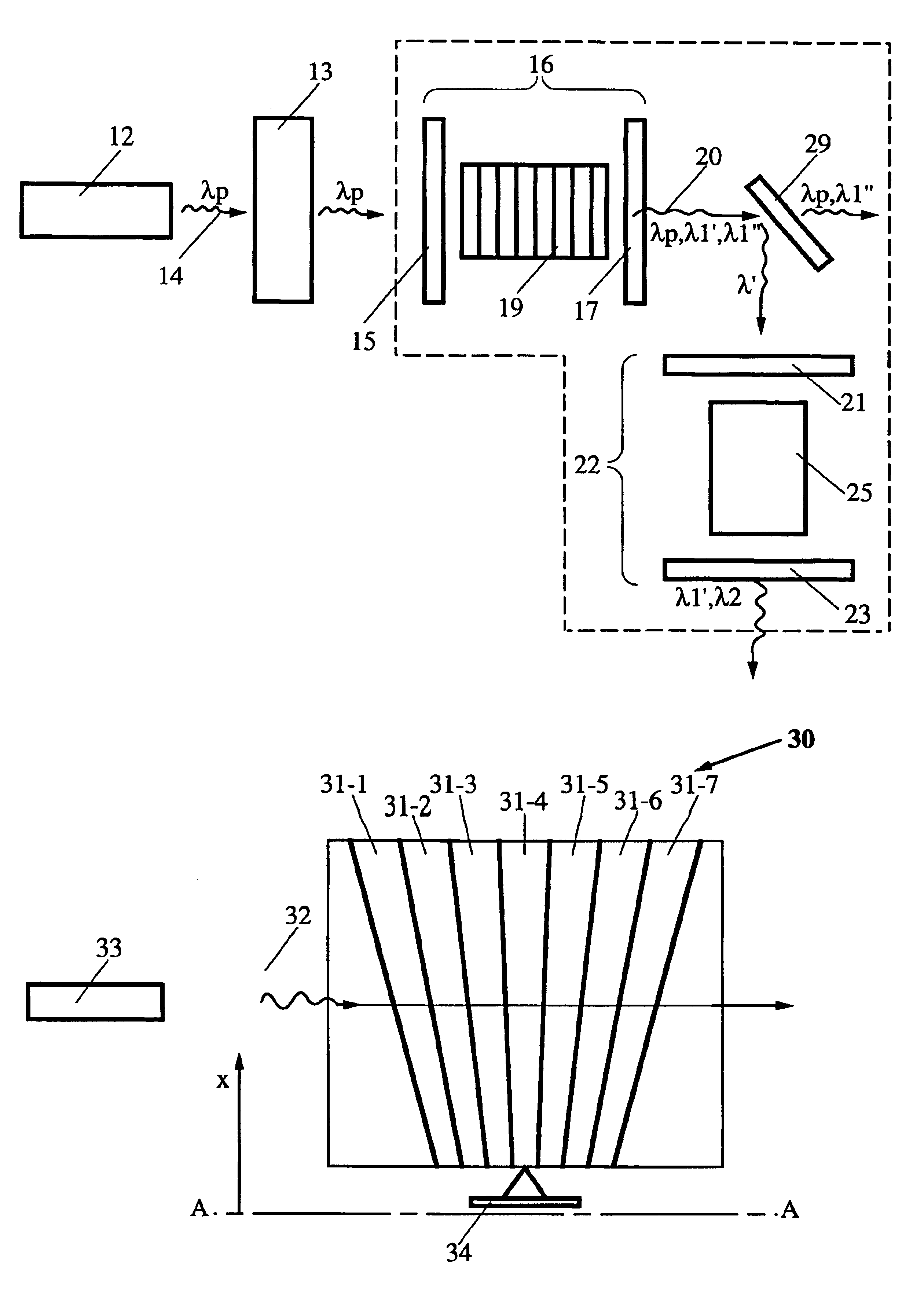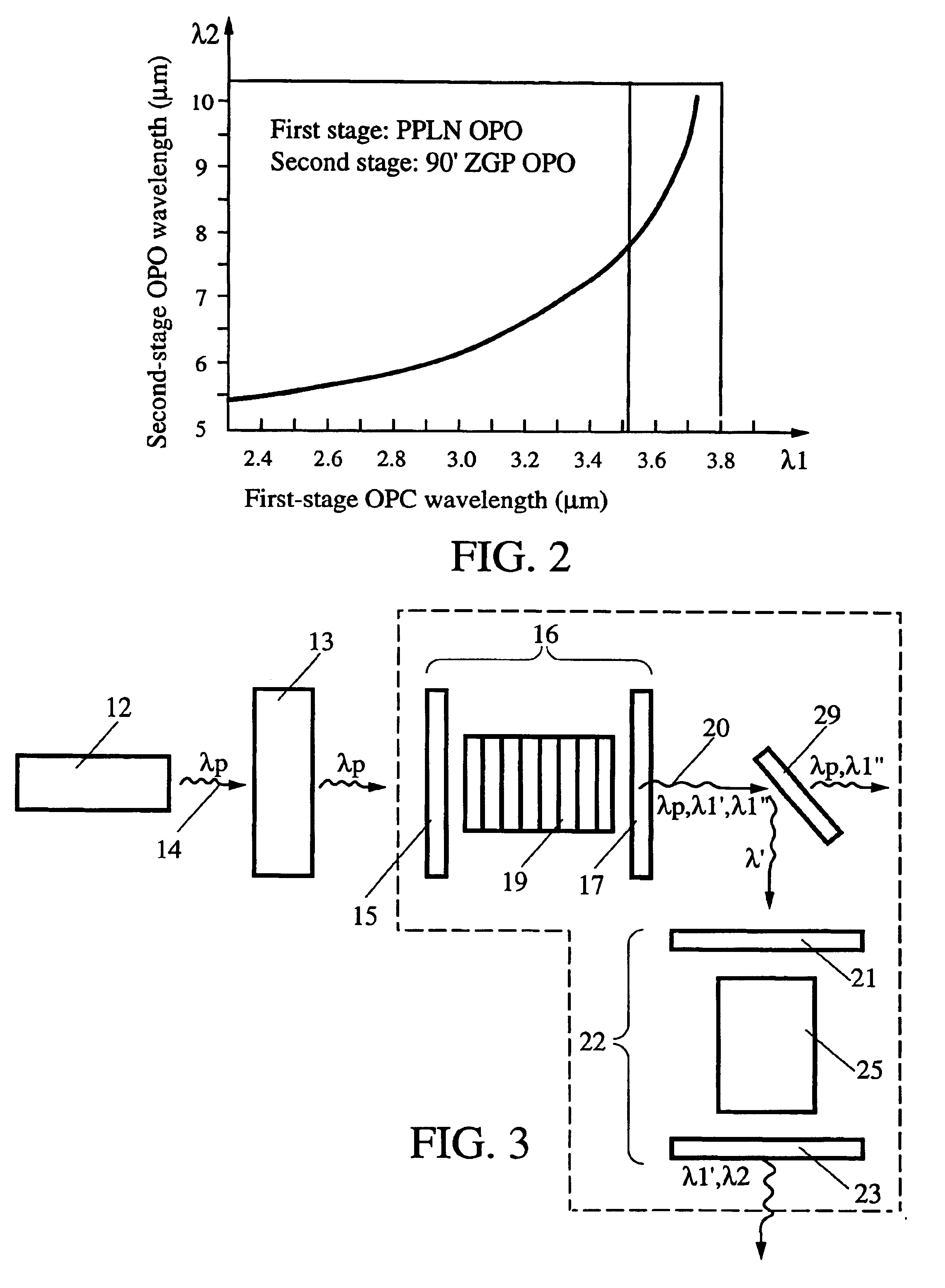Cascaded noncritical optical parametric oscillator
a parametric oscillator and parametric oscillator technology, applied in the field of systems, can solve the problems of limited tuning range of existing opos, limited opos to .lambda, and limited opos to commercially available opos, and achieve the effect of low pumping threshold and high efficiency
- Summary
- Abstract
- Description
- Claims
- Application Information
AI Technical Summary
Benefits of technology
Problems solved by technology
Method used
Image
Examples
Embodiment Construction
FIG. 1 illustrates an embodiment 11 of the invention. A laser light source 12 provides a pump light beam 14 having a selected wavelength .lambda.p, or narrow range of wavelengths around a central wavelength. The first light beam 14 is received by a first optical cavity 16, defined by spaced apart first and second mirrors, 15 and 17, and having a first nonlinear crystal (NLC) 19 (e.g., quasi-phase matched, periodically poled LiNbO.sub.3) positioned therein. The first NLC 19 has first and second spaced apart, light transmitting surfaces to receive the pump light beam at approximately normal incidence, and one or both of the first and second light transmitting surfaces is optionally coincident with the first and second mirrors, 15 and 17, respectively, of the first cavity 16. In one approach, the laser light source 12 is an Nd:YAG laser and the pump wavelength .lambda.p is approximately 1.064 .mu.m. Optionally, a Faraday rotator or other optical isolator mechanism 13 is positioned betw...
PUM
 Login to View More
Login to View More Abstract
Description
Claims
Application Information
 Login to View More
Login to View More - R&D
- Intellectual Property
- Life Sciences
- Materials
- Tech Scout
- Unparalleled Data Quality
- Higher Quality Content
- 60% Fewer Hallucinations
Browse by: Latest US Patents, China's latest patents, Technical Efficacy Thesaurus, Application Domain, Technology Topic, Popular Technical Reports.
© 2025 PatSnap. All rights reserved.Legal|Privacy policy|Modern Slavery Act Transparency Statement|Sitemap|About US| Contact US: help@patsnap.com



